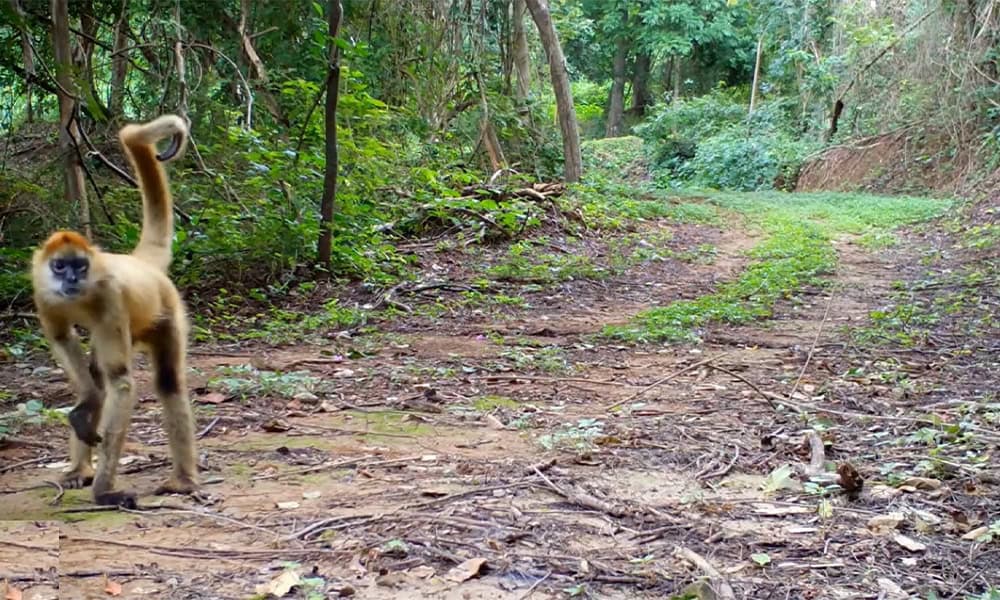Some animals seem perfectly designed for their environments. Dolphins’ streamlined bodies appear excellently adapted to slipping through the waves just as magnificent frigatebirds’ long wings make it look as though they could fly forever. The same could be said for today’s featured creature, the Central American spider monkey. They move through the treetops with such grace and ease, it’s almost as though their bodies were designed for it. Spoiler alert! That’s because they are.
Central American spider monkeys (Ateles geoffroyi) are also known as black-handed spider monkeys and Geoffroy’s spider monkey. The scientific name and one of the common names include Geoffroy as a reference to an old-timey French naturalist whose name you can find attached to several species of wild creatures. The Spanish names that I’ve come across in Costa Rica are mono araña and mono colorado.
These monkeys spend the majority of their time in the upper levels of the forest. Much of the time they spend up there is in search of something to eat. Though they eat things like flowers, bark, insects, and honey, the large majority of their diet is made up of fruit. They are the most frugivorous (fruit eating) of Costa Rica’s four species of monkey, with fruit making up between seventy to eighty percent of their diet.
The problem with relying on fruit as a major food source is that there is often a ton of distance between one fruiting tree and another, requiring a lot of movement. Central American spider monkeys have physical and social adaptations to just this sort of lifestyle. Physically, their arms and tails are designed to swing them through the forest canopy with ease. Their arms are long and powerful, and their hands have long fingers and lack a thumb, giving them a hook shape that allows them to swing from one branch to another.
Their long prehensile tail has a leathery pad on the underside at the tip that aids in gripping branches and allows the tail to function like another arm. Socially, they have adapted to their sporadically located food by breaking up their large groups of 20 to 40 individuals into smaller ones, allowing them to spread out and more efficiently locate fruit trees.
Central American spider monkeys are my favorite species of monkey. I think they are generally awesome looking. I like the way they move through the treetops. And I love how upset they get when they see me walking below them on the forest floor, aggressively shaking branches and yelling at me.
I worked closely with two female spider monkeys during my time at a wildlife rehabilitation and release center. Every morning they would greet me with a squeaking noise and a kissy face which I happily returned. I often fed them by placing small pieces of fruit in a sort of disc-shaped puzzle where they would have to rotate a disc with a small hole in it to line it up properly with the food recipient below. It was a more interesting way for them to feed themselves as compared to an open bowl of food, and they excelled at it.
I see Central American spider monkeys every once in a while, mostly while working in northern Guanacaste or down in Osa. Since they spend most of their time at heights in trees where I’m afraid to venture, I do not frequently record them with my camera traps. A few years ago, I completed a camera trap project with Costa Elena where there was a group of spider monkeys that ventured to the ground more often than any other group that I’ve encountered since. I was lucky to record them a few times and I’m happy to share those clips with you in the video below.
About the Author
Vincent Losasso, founder of Guanacaste Wildlife Monitoring, is a biologist who works with camera traps throughout Costa Rica. Learn more about his projects on facebook or instagram. You can also email him at: vincent@guanacastewildlifemonitoring.com






